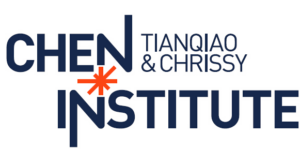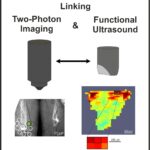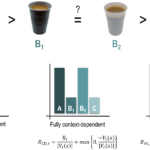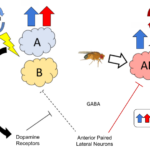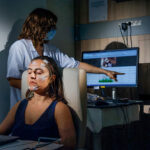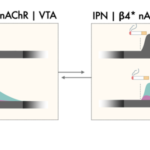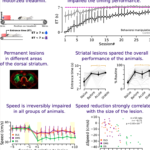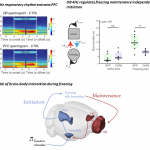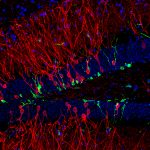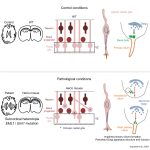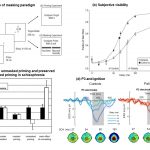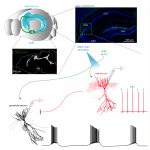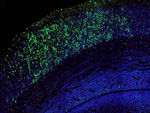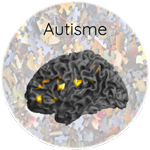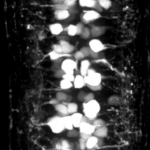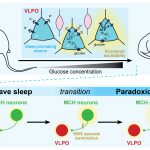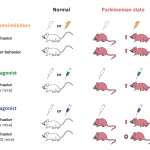Prix de thèse
La Société des Neurosciences attribuera en 2025 des Prix de Thèse, de 1000€ chacun, destinés à récompenser un travail de doctorat en neurosciences. Ce Prix comprend également une inscription gratuite au colloque NeuroFrance 2025 (Montpellier, du 14 au 16 mai).
Conditions
Le·la candidat·e doit :
· Être membre de la Société des Neurosciences
· Avoir soutenu sa thèse entre le 1er janvier et le 31 décembre 2024
· Avoir réalisé ses travaux de thèse en France
· Avoir inséré sa thèse sur le serveur de la Société des Neurosciences
Dans la mesure du possible, les lauréat·e·s devront être présent·e·s pour la remise des Prix qui aura lieu lors du congrès NeuroFrance 2025 à Montpellier du 14 au 16 mai 2025.
Pièces à fournir (au format PDF)
· Une lettre de candidature (3000 caractères maximum, espaces compris) : rappeler brièvement les travaux effectués lors de la thèse, en mettant l’accent sur leur originalité et leur impact dans le domaine des neurosciences (ils seront détaillés dans l’exposé des travaux).
· Un bref CV incluant notamment la formation, la liste des publications, articles originaux et communication à des congrès.
· Un exposé des travaux de thèse et éventuellement du projet post-doctoral (3-4 pages maximum). Il est essentiel de préciser quelles ont été les contributions personnelles du·de la candidat·e aux travaux et aux publications présentés.
· Les rapports de thèse
· Un exemplaire de la thèse
Toutes les candidatures devront être soumises via le formulaire en ligne, les dossiers par mèl ne seront pas acceptés.
L’appel à candidature est clos.

Rachel BRETON
Rôle des astrocytes dans la période critique de la plasticité visuelle.
Directeur·trice·s de thèse : Glenn Dallérac et Nathalie Rouach
Lieux de thèse : Institut des Neurosciences Paris-Saclay (NeuroPSI, CNRS) et au Centre interdisciplinaire de recherche en Biologie (CIRB), Collège de France
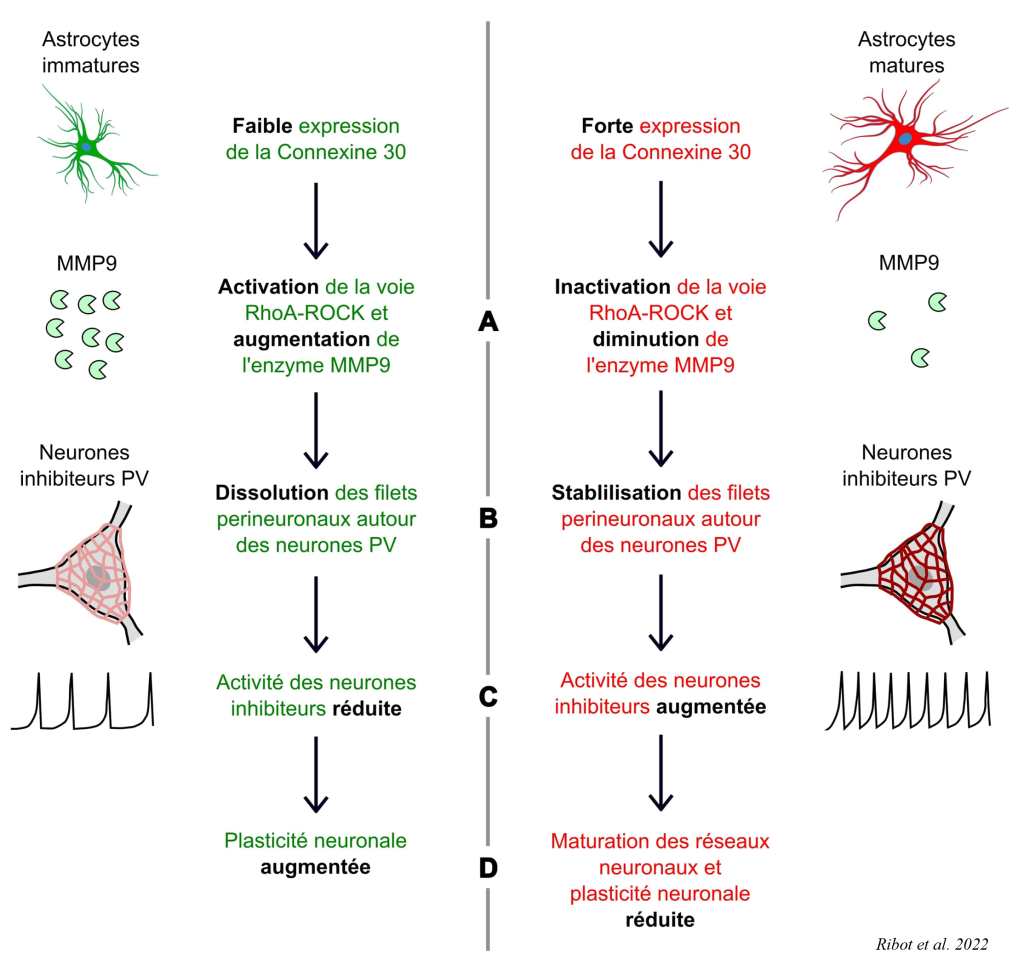

Mélina CORDEAU
Perception de la voix : caractérisation anatomique comparées des aires fonctionnelles chez l’humain et le macaque.
Directeur de thèse : Pascal Belin
Lieu de thèse : Institut de Neurosciences de la Timone, Marseille
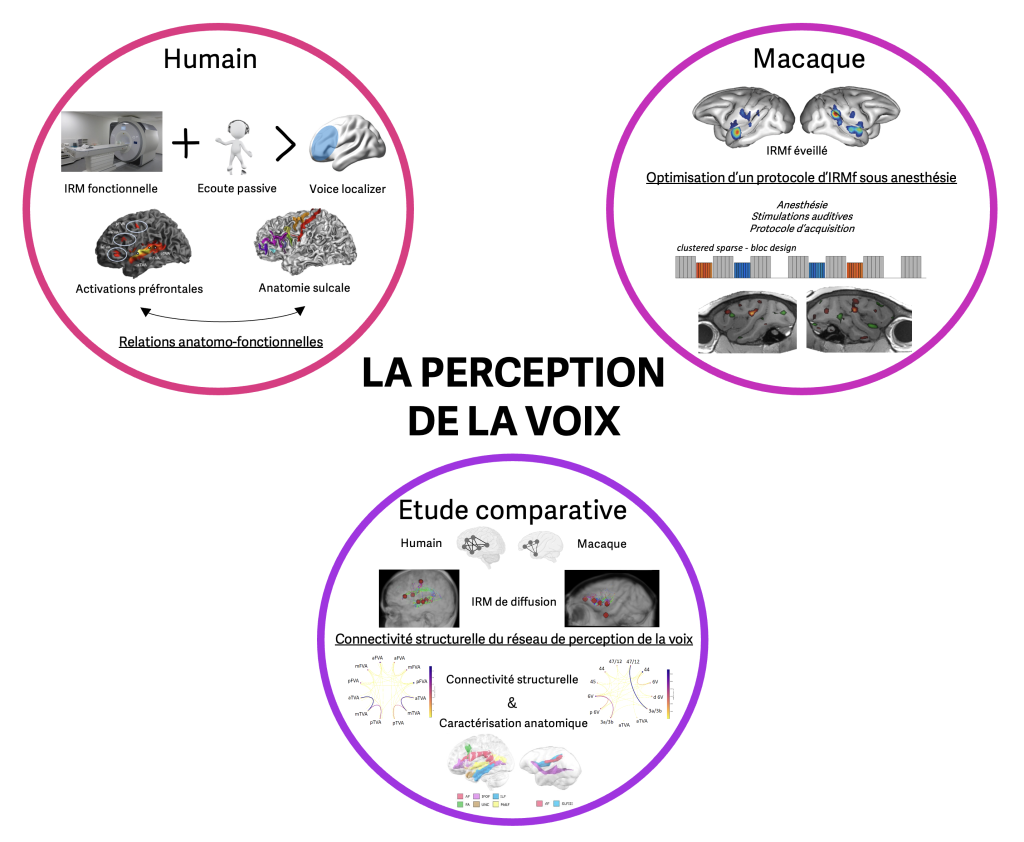
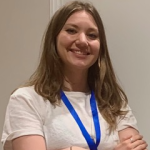
Agathe LAFONT
The glial action potential & its role during the emergence of motor behaviour.
Directeur de thèse : Jean-Marc Mangin
Lieu de thèse : Laboratoire Neurosciences Paris Seine / Équipe « Développement de l’Organisation Spinale »
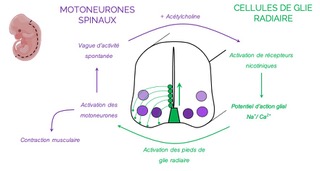

Romain SALA
Parallel cerebello-cerebral pathways and their involvement in implicit learning.
Directeur·trice·s de thèse : Daniela Popa et Clément Léna
Lieu de thèse : IBENS / Neurophysiology of Brain Circuits
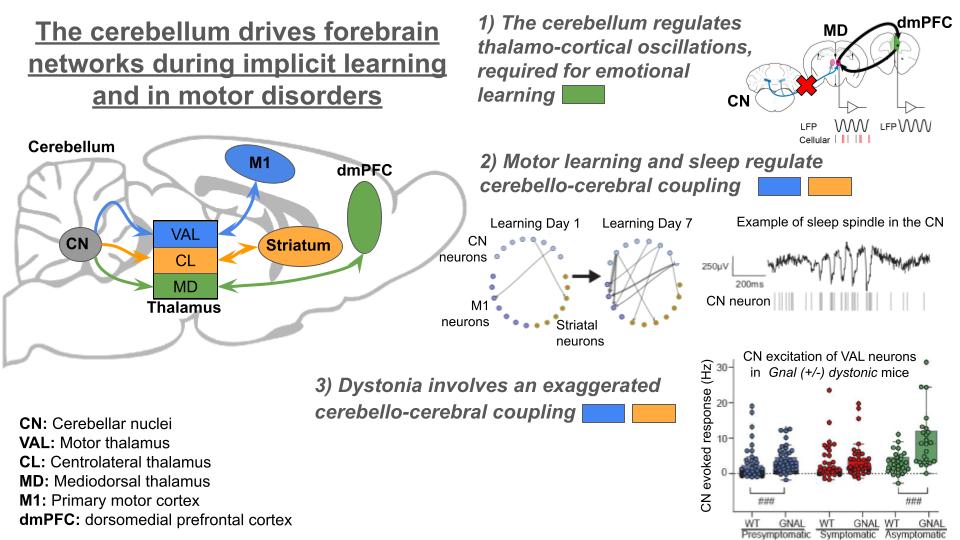
2023
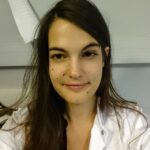
Cassandre VIELLE
Influence of proximal social factors on cocaine consumption and the role played by the subthalamic nucleus.
Directrice de thèse : Christelle Baunez
Lieu de thèse : Institut de Neurosciences de la Timone, Faculté de Médécine, Marseille
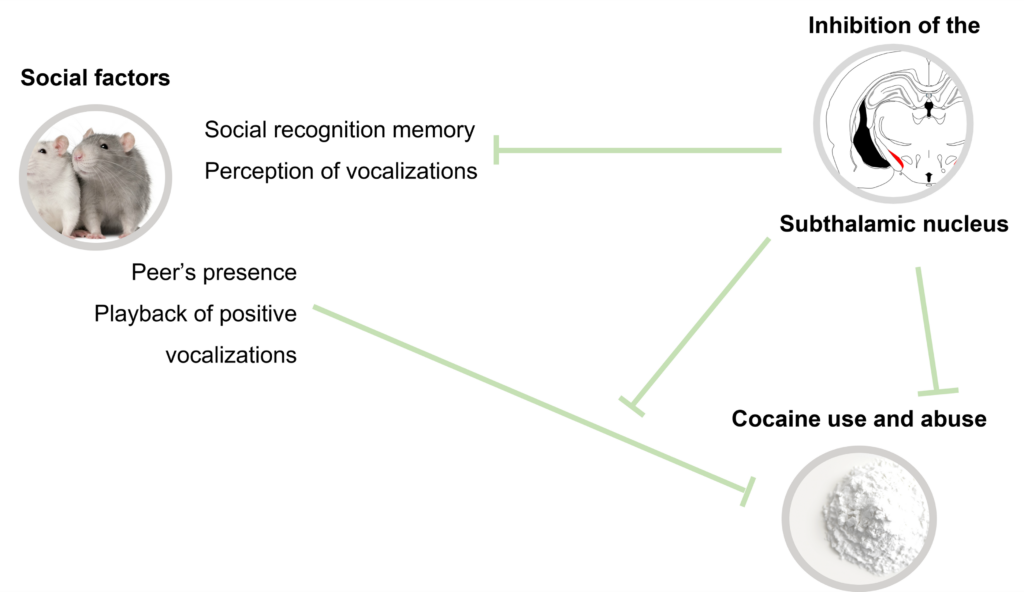

Marc OUDART
Characterization of translational mechanisms in astrocytes.
Directrice de thèse : Martine Cohen-Salmon
Lieu de thèse : Équipe ‘Physiologie et physiopathologie de l’unité gliovasculaire’, Centre Interdisciplinaire de recherche en biologie, Collège de France, Paris
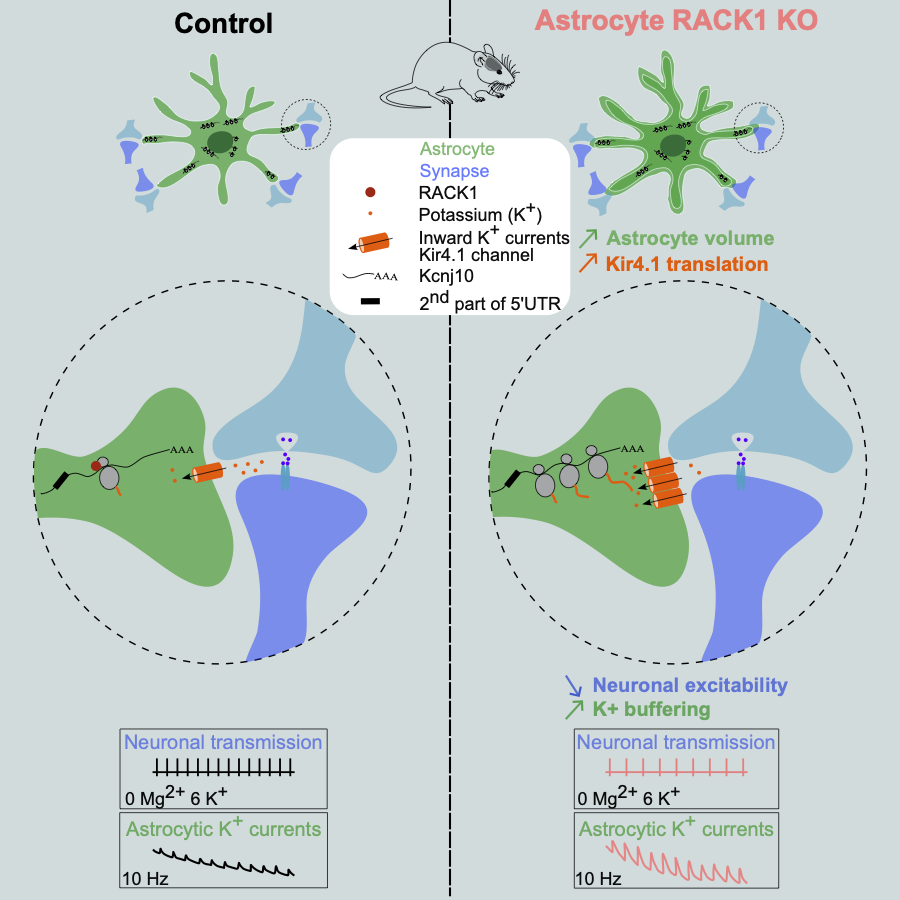

Florian DONNEGER
Caractérisation et intérêt thérapeutique de potentialisateurs du co-transporteur potassium-chlorure de type 2 (KCC2) dans les épilepsies du lobe temporal.
Directeur de thèse : Jean-Christophe Poncer
Lieu de thèse : Institut du Fer à Moulin, Inserm-Sorbonne Université UMR-1270, Paris
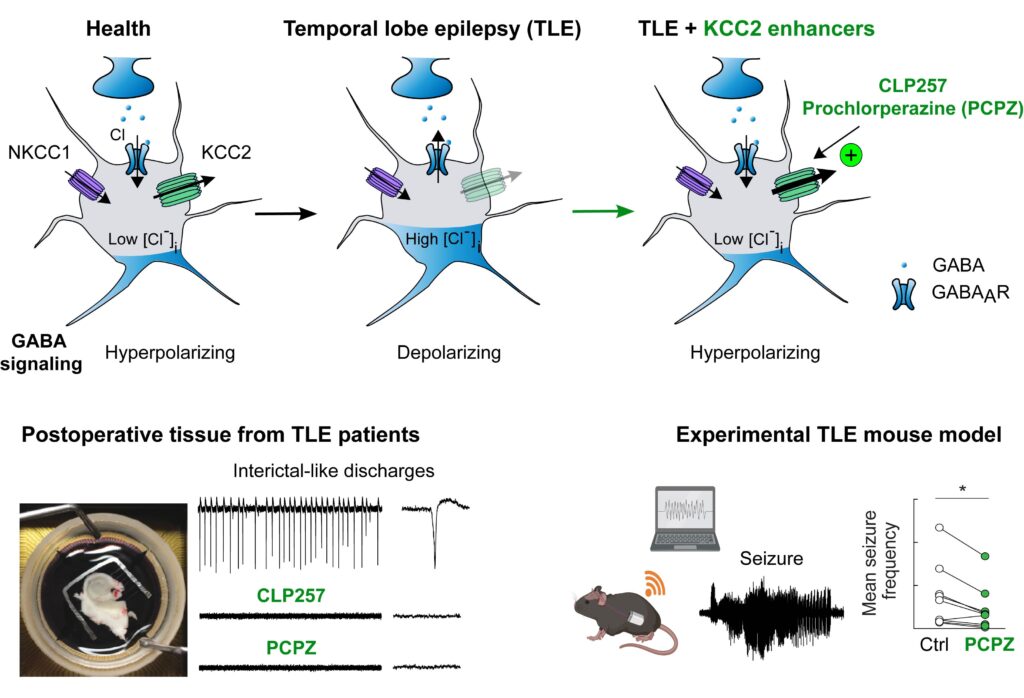
2022

Ali-Kemal AYDIN
Functional brain imaging techniques: bridging the gap between microscopic and mesoscopic vascular measurements
Directeur de thèse : Serge Charpak
Lieux de thèse : Laboratory of Neurophysiology and New Microscopy, 45 Rue des Saints Pères, Paris & Institut de la Vision, 17 Rue Moreau, 75012 Paris
Neurons and glial cells require a continuous adaptation of blood supply to meet their metabolic needs. Functional hyperemia is a local increase of blood flow triggered by neuronal activation, and which is regulated by neurovascular coupling, an ensemble of cellular and molecular pathways. fMRI-BOLD and functional ultrasound (fUS) are two brain imaging modalities that rely on functional hyperemia to map normal and pathological brain function. My first project determined the dynamics of neurovascular coupling and quantified how well the fUS signal reports brain activation. Using a new theoretical approach, we determined that neurovascular coupling can be modeled with a fast hemodynamic response function (HRF) that allows to predict the dynamics of fUS signals. My last project solved the BOLD fMRI controversy concerning the existence of the ‘initial dip’, a transient decrease of brain oxygenation due to neuronal activation. We showed that the dip is not detectable when the animal is awake and under physiological conditions.
Sophie BAVARD
Computational principles of adaptive coding in healthy and impaired reinforcement learning
Directeur de thèse : Stefano Palminteri
Lieu de thèse : Laboratoire de neurosciences cognitives et computationnelles, 29, rue d’Ulm, Paris
Do you think you make all your decisions rationally? Imagine that you can choose between different fruits: you probably have a pre-established order of preferences and you will make your choice accordingly. If you prefer apples to bananas, and bananas to cherries, chances are you prefer apples to cherries. But is this true for economic choices? Can your experience influence your decisions when it comes to money? These are the questions I addressed during my PhD, between cognitive neuroscience, mathematics and psychiatry. Using mathematical models, we showed that our choices are influenced by the context in which the values of the different alternatives were learned. First, we developed existing models and paradigms explaining decision-making strategies in a large sample of healthy volunteer participants, using recent tools such as large-scale online experiments. Then, we used innovative approaches to identify the links between the parameters of our decision-making models and reward-related pathological traits that may affect value learning. In the long term, this research will potentially help to develop new tools to characterize phenotypes of several pathologies and behavioral disorders, as well as improve patients’ treatment at the individual level.

Matthias DURRIEU
Bases comportementales, moléculaires et cellulaires de l’apprentissage ambigu chez la Drosophile
Directeur de thèse : Guillaume Isabel
Lieu de thèse : Centre de Recherches sur la Cognition Animale (UMR 5169), 169, avenue Marianne Grunberg-Manago, Toulouse
Associative learning is a well studied ability through which animals link sensory cues to biologically relevant features. However how animals overcome conflicting environmental cues remains unclear. Here we showed for the first time that fruit flies can solve seemingly complex forms of learning tasks, also known as non elemental learning. Using a dual approach of neurogenetic manipulations and modelling, we demonstrated that in order to solve such tasks, flies must learn not to respond to non reinforced stimuli, which is enabled by a gradual conditionned inhibition process driven by the differential recruitment of a single pair of inhibitory neurons, the Anterior Paired Lateral (APL) neurons.
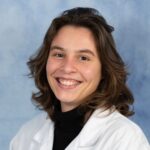
Célia LACAUX
La frontière entre éveil et sommeil, une porte d’entrée vers la créativité
Directrice de thèse : Delphine Oudiette
Lieu de thèse : Institut du Cerveau Paris, Hôpital Pitié, 47 Bd de l’Hôpital, Paris
Creativity is a critical human skill. Yet, despite its utter importance in our life, we have limited control over when creativity hits us: novel ideas often seem to pop out of nowhere in “Eureka! moments”. What if we could find a way to summon our creative muse when we most need it? My research demonstrated that the transitory period between wakefulness and sleep serves as a gateway to creativity. I first demonstrated that patients suffering from narcolepsy, a sleep disorder characterized by multiple sleep attacks during the day, exhibited an increased creativity. I then confirmed this link between sleep onset and creativity in healthy individuals, finding that dozing for just one minute tripled the likelihood of solving a problem (compared to wakefulness). In the future, I hope to develop tools that will precisely target this creative window and awaken us in time to capture these flashes of inspiration before they vanish into the limbo of sleep.
2021

Sarah MONDOLONI
Rôle des récepteurs nicotiniques des circuits de l’addiction à la nicotine : une manipulation originale des récepteurs grâce à la lumière
Directeur de thèse : Alexandre Mourot
Lieu de thèse : Equipe neurophysiologie et comportement – Institut de biologie Paris Seine – Neuroscience Paris Seine (UMR 8246), 9 quai Saint Bernard, Paris
Nicotine has well known reinforcing as well as aversive properties. It acts through nicotinic acetylcholine receptors (nAChRs) to hijack motivation-related neuronal circuits, leading to addiction. In my PhD project, I implemented a new technology, that uses light to reversibly block the action of nicotine on nAChRs in specific brain circuits. I found that the rewarding effect of nicotine requires β2 nAChRs expressed in the ventral tegmental area, while the aversive properties of the drug involve β4 nAChRs of the interpeduncular nucleus.

Mostafa SAFAIE
Embodied timing and the contribution of the dorsal striatum
Directeur de thèse : David Robbe
Lieu de thèse : INMED, Marseille
In this work, we first attempted to determine whether there is an internal mechanism which can provide a measure of time that drives behavior. Multiple experiments designed to interfere with the usage of stereotyped motor routines all led to a drastic decline in temporal accuracy, suggesting that accurate timing requires stereotyped motor routines. Then, we studied the function of the dorsal striatum in the learning and execution of these routines. We showed that after permanent lesions of the striatum, the only consistent effect is an oversensitivity to the effort invested in motor routines.

Robin VIGOUROUX
Diversité des projections visuelles chez les vertébrés
Directeur de thèse : Kim Nguyen-Ba-Charvet
Lieu de thèse : Institut de la Vision, 17 rue Moreau, Paris
The human visual system has a particularity that allows us to see in three dimensions (3D). Each eye sends part of its visual field to the same side of the brain (ipsilateral projections) and to the opposite side of the brain (contralateral projections). The fusion of these two projections, in each hemisphere, is the cellular basis for 3D vision. Interestingly, this ability to see in 3D is shared with most other mammals and is currently thought to coincide with the appearance of tetrapods. Thanks to a novel tissue clearing protocol (EyeDISCO) developed during my PhD, I was able to show that the cellular bases of depth perception arose in fish before the water-to-land transition, more than 450 million years ago. However, the molecular players responsible for these projections are not conserved in evolution.
2021

Sophie BAGUR
Les oscillations du bulbe olfactif : marqueurs et organisateurs des états cérébraux liés à l’émotion
Directeur de thèse : Thierry GALLOPIN
Lieu de thèse : Equipe MOBS (Memory, Oscillations, Brain States), UMR 8249, Plasticité du cerveau, Paris
Bodily changes are hallmarks of emotions and have long been suggested to feedback to impact neural processing, but no mechanism has ever been shown. In mice, very regular 4Hz breathing during fear-related freezing behavior is transmitted via the olfactory system to the prefrontal cortex where it entrains neural activity. Optogenetic perturbation of this rhythm demonstrates that it plays a key role in maintaining sustained freezing episodes, independent of their initiation. These results point to a brain-body-brain loop in which the initiation of emotional behavior engenders somatic changes which then feedback to the cortex to directly participate in sustaining emotional states.

Kévin CARVALHO
Rôle des récepteurs adénosinergiques A2A dans la maladie d’Alzheimer .
Directeur de thèse : David BLUM
Lieu de thèse : « Alzheimer & Tauopathies », UMR-S 1172 – Centre de recherche Lille Neuroscience & Cognition, Lille
Neuronal accumulation of pathological tau drives cognitive decline in Alzheimer’s disease (AD) and Tauopathies. Interestingly, progression of tau pathology is correlated to a neuronal and astrocytic upregulation of the druggable adenosine A2A receptor (A2AR). During my PhD, we were able to demonstrate that the latter is instrumentally involved in Tau-induced memory deficits, through synaptic loss and pathological worsening. These results support that repurposing A2AR antagonists is a valuable therapeutic strategy in AD and Tauopathies.

Ana UZQUIANO LOPEZ
Progenitor cell mechanisms contributing to cortical malformations: studying the role of the heterotopia gene Eml1/EML1 in radial glia.
Directrice de thèse : Fiona FRANCIS
Lieu de thèse : Cortical development and pathology team, Institut du Fer à Moulin, Inserm U1270, Paris
Cortical development relies on a series of finely regulated steps, including neuronal progenitor cell function and neuronal migration. Perturbation of these steps results in severe cortical malformations associated with epilepsy and intellectual disability. Mutations in the microtubule-associated protein Eml1 result in heterotopia (mispositioned neurons) in mouse and man. During my PhD, I used a wide range of approaches (imaging, mass spectrometry, biochemistry, genetics) to elucidate the role of Eml1 in neuronal progenitors. My results unraveled its role in the formation of primary cilia, critical for progenitor function, underpinning subcellular patho-mechanisms leading to severe heterotopia.
2019

Lucie BERKOVITCH
Non-conscious processing, attentional amplification and conscious access: experimental investigations in healthy controls and patients with schizophrenia
Directeur de thèse : Stanislas Dehaene
Lieu de thèse : Unité INSERM-CEA 562 « NeuroimagerieCognitive », Gif-sur-Yvette
In many studies, persons with schizophrenia exhibit an elevated threshold for conscious perception while subliminal processing is preserved. In this thesis, we explored and compared conscious access mechanisms and non-conscious processing in healthy controls and persons with schizophrenia. In particular, we found that the disruption of conscious access in schizophrenia was associated with cerebral dysconnectivity and abnormal attentional amplification.
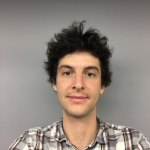
Vincent ROBERT
Hypothalamic control of hippocampal area CA2 activity
Directrice de thèse : Rebecca Piskorowski
Lieu de thèse : Institut de Psychiatrie et Neurosciences de Paris, INSERM U894, Paris
Memory formation requires information processing by the hippocampus, which is influenced by other brain areas sending long-range inputs such as the supramammillary nucleus of the hypothalamus (SuM). During my PhD, I used electrophysiology and optogenetics to decipher the neuronal circuit engaged by the SuM in hippocampal area CA2. My results show that the SuM input recruits feedforward inhibition through parvalbumin-expressing basket cells that enhances spike fidelity of CA2 pyramidal neurons, and shapes their bursting activity in conditions of elevated cholinergic tone.

Laurie ROBIN
Roles of astroglialcannabinoid type 1 receptors (CB1) in memory and synaptic plasticity
Directeur de thèse : Giovanni Marsicano
Lieu de thèse : Neurocentre Magendie, Equipe Endocannabinoide et Neuroadaptation, INSERM U1012, Bordeaux
Type-1 cannabinoid receptors (CB1R) are important modulators of physiological functions. CB1R are expressed in different types of neurons but also in the astrocytes. However, the physiological roles of astroglial CB1R of the hippocampus in synaptic plasticity and memory remained unknown. By using behavior, electrophysiology, imaging and biochemistry, my PhD work showed that physiological activation of astroglial CB1R in the hippocampus is necessary for long-term object recognition memory consolidation via a mechanism involving the supply of D-serine to synaptic NMDARs and, consequently, the regulation of hippocampal synaptic plasticity. Thus, astroglial CB1R contribute to the time and space-specific synaptic actions of astrocytes to promote memory formation.
Crédit photo : © Charlie Padgett
2018

Benjamin Compans
Rôle physiologique de l’organisation des récepteurs AMPA à l’échelle nanométrique à l’état basal et lors des plasticités synaptiques.
Directeur de thèse : Eric Hosy
Lieu de thèse : Institut Interdisciplinaire de NeuroSciences (IINS), CNRS UMR 5297, Université de Bordeaux, Bordeaux
AMPA-type glutamate receptors (AMPAR) mediate most fast excitatory transmission. Recently, super-resolution microscopy techniques revealed the molecular clusterization of AMPAR at synapses, opening to a new vision of synaptic transmission properties. During my PhD, I combined super-resolution microscopy and electrophysiology to demonstrate that AMPAR nanodomain misalignment regarding glutamate release site strongly impairs synaptic transmission efficiency. In addition, I described a 2-step synaptic molecular reshuffling during Long-Term Depression with (i) an AMPAR nanodomain reorganization and (ii) an AMPAR surface diffusion increase, triggering a modification of synaptic integration.
Crédit photo : © Benjamin Compans, Interdisciplinary Institute for Neuroscience, Bordeaux

Baptiste Libé-Philippot
Etude du rôle de protéines apparentées aux cadhérines dans le développement des interneurones du cortex auditif.
Directrice de thèse : Christine Petit
Lieu de thèse : Unité de Génétique et Physiologie de l’Audition, Institut Pasteur, Paris
In early-onset genetic forms of deafness, deficits of the auditory sensory organ are sufficient to account for the hearing impairment. The possibility that intrinsic deficits of the auditory central system coexist with the peripheral deficits is almost unexplored. My PhD work show, in mouse, an intrinsic role of two proteins (cdhr23 and cdhr15) in the development of the parvalbumin interneuron of the auditory cortex. These proteins are associated to inherited deafness genes and are critically involved in the mechano-electrical transduction of the auditory sensory cells. These results – if confirmed in human – should be considered in hearing rehabilitation strategies. They also shed new light on the development of the cortical (inhibitory) interneurons.

Laurie-Anne Sapey-Triomphe
Inférence et apprentissage perceptifs dans l’autisme : une approche comportementale et neurophysiologique.
Directrice de thèse : Christina Schmitz
Lieu de thèse : Equipe Dynamique Cérébrale et Cognition, Centre de Recherche en Neurosciences de Lyon (CRNL), INSERM U1028 – CNRS UMR5292, Bron
Suboptimal perceptual learning has been hypothesized to be at the core of autism spectrum disorders (ASD). My thesis aimed at empirically testing and characterizing this phenomenon. Following a multilevel approach including behavioural measures, neuroimaging experiments and computational models, we showed that adults with ASD are impaired in the way they integrate sensory information with prior knowledge. Our approach shed light on the behavioural, neural an molecular mechanisms underlying perceptual learning in ASD.
Crédit photo : © Fondation L’Oréal
2017
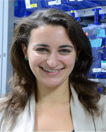
Jenna Sternberg
Neuronal populations underlying locomotion in zebrafish.
Directreur de thèse : Hugues Pascal-Moussellard
Lieu de thèse : Institut du Cerveau et de la Moelle épinière, Paris
The neural networks that underlie locomotion are complex and require integration of sensory input and physiological state, however, how this integration occurs is poorly understand. During my PhD, I developed tools to manipulate the activity of genetically-specified populations of neurons in the zebrafish spinal cord and monitor behavioral output in a quantitative and high-throughput manner. I then investigated how premotor interneurons and sensory neurons that interface between cerebrospinal fluid and motor circuits contribute to spinal cord function. Together, these results allow a more complete picture of how dynamic interactions shape locomotor output in vivo.

Christophe Varin
Contribution de noyaux hypothalamiques et de leur interconnexion à la régulation du sommeil.
Directeur de thèse : Patrice Fort (Équipe SLEEP)
Lieu de thèse : Centre de Recherche en Neurosciences de Lyon, Lyon
Sleep serves universal needs and dedicated biological functions. However the precise mechanisms contributing to the alternation between vigilance states remain unresolved. During this thesis, we progressed in understanding these mechanisms by demonstrating that glucose can facilitate sleep onset by directly exciting sleep-promoting neurons within the VLPO, and by dissecting the contribution of MCH neurons to sleep regulation and in particular to slow-wave sleep control through their efferent connection to the VLPO.

Samira Ztaou
Implication des interneurones cholinergiques striataux dans la physiopathologie de la maladie de Parkinson : Etude optogénétique, pharmacologique et comportementale.
Directrice de thèse : Marianne Amalric
Lieu de thèse : Laboratoire de Neurosciences Cognitives LNC UMR 7291, Aix-Marseille
Over the last decade, striatal cholinergic interneurons (ChIs) have reemerged as key actors in the pathophysiology of movement disorders. Current views suggest that an imbalance between acetylcholine and dopamine activity in the striatum is central to the development of symptoms in Parkinson’s disease (PD). Using optogenetics, pharmacological and behavioral approaches, my PhD work showed that ChIs photoinhibition and blockade of postsynaptic M1 and M4 muscarinic cholinergic receptors alleviate motor, cognitive and emotional deficits observed in different mice models of PD. These results give new insights on the role of ChIs in normal condition and pathophysiology mechanisms of PD.
2016

Morgane BOILLOT
Etude de la fonction de la protéine LGI1 impliquée dans les épilepsies du lobe temporal.
Directrice de thèse : Stéphanie Baulac
Lieu de thèse : Institut du Cerveau et de la Moelle épinière, Hôpital de la Pitié-Salpêtrière, U1127, UMR7225, UMRS1127, Paris

Guy BOUVIER
Synaptic plasticity rule between parallel fibres and Purkinje cells in the cerebellum.
Directeur de thèse : Mariano Casado
Lieu de thèse : Institut de Biologie de l’Ecole Normale Supérieure, CNRS UMR 8197 /INSERM U 1024, Cerebellum group, Paris

Gaetan de LAVILLEON
De la corrélation à la causalité : apports des interfaces cerveaux-machines sur l’étude des réactivations des cellules de lieu et des oscillations lentes du sommeil.
Directeur de thèse : Karim Benchenane
Lieu de thèse : Plasticité du Cerveau, ESPCI ParisTech, UMR8249, Paris
2015

Elaine ASTRAND
Real-time readout of neural contents in visual perception and selection in the non-human primate.
Directrice de thèse : Suliann Ben Hamed
Lieu de thèse : Institut des Sciences Cognitives, Université Claude Bernard Lyon 1, Bron

Clémence BERNARD
Otx2-glycosaminoglycan interaction to regulate visual cortex plasticity.
Directeur de thèse : Ariel Di Nardo
Lieu de thèse : CIRB, Collège de France, Paris

Kevin RICHETIN
Modulation de la neurogenèse hippocampique adulte et récupération mnésique dans un modèle murin de la Maladie d’Alzheimer.
Directrice de thèse : Claire Rampon
Lieu de thèse : Centre de Recherches sur la Cognition Animale, Université Paul Sabatier Toulouse 3, Toulouse
2014

Julien COURTIN
Rôle des interneurones corticaux parvalbuminerques dans les comportements de peur.
Directeur de thèse : Cyril Herry
Lieu de thèse : Université de Bordeaux, Neurocentre Magendie – INSERM U.862, Physiopathologie de l’addiction, Bordeaux

Fanny LANGLET
Etude de l’interface Sang-Noyau Arqué Hypothalamique au cours d’un déséquilibre énergétique : Plasticité de l’éminence médiane et impact sur la régulation de la prise alimentaire.
Directrice de thèse : Bénédicte Dehouck
Lieu de thèse : Inserm U837, JPARC, Equipe 2, « Développement et Plasticité du cerveau post-natal », Lille

Alexandre PARPALEIX
Imagerie biphotonique de la Po2 intracérébrale : une mesure de l’activité neuronale.
Directeur de thèse : Serge Charpak
Lieu de thèse : Université Paris Descartes, INSERM U1128, Neurophysiology & New Microscopy Laboratory, 45 Rue des Saints Pères, Paris.
2013

Marie DECK
Etude du guidage des axones corticofuges pionniers.
Directeur de thèse : GAREL Sonia
Lieu de thèse : Institut de Biologie de l’Ecole Normale Supérieure – Equipe « Brain development and plasticity »

Emilie MACÉ
Développement d’une nouvelle modalité d’imagerie fonctionnelle cérébrale et étude de l’élasticité du cerveau par ultrasons.
Directeur de thèse : Mickael Tanter
Lieu de thèse : Institut Langevin

Stefano PALMINTERI
Neural underpinnings of human reinforcement-based learning and decision making in humans.
Directeur de thèse : Pessiglione Mathias
Lieu de thèse : Motivation, Brain et Behavior (MBB) team, Institut du Cerveau et de la Moelle (ICM), Hôpital de la Pitié-Salpêtrière, 75013, Paris
2012

Gabrielle GIRARDEAU
Bases neurales de la consolidation mnésique chez le rat : rôle et physiologie des oscillations hippocampiques rapides.
Directeur de thèse : Michaël Zugaro
Lieu de thèse : LPPA (Laboratoire de Physiologie de la Perception et de l’Action), Collège de France, Paris

Benjamin MORILLON
Rôle des oscillations corticales dans l’asymétrie fonctionnelle du traitement de la parole.
Directeur de thèse : Anne-Lise Giraud
Lieu de thèse : Laboratoire de Neurosciences Cognitives, Inserm U960, Ecole Normale Supérieure, Paris

Nicolas RENIER
Développement et fonction des commissures cérébrales.
Directeur de thèse : Alain Chédotal
Lieu de thèse : Institut de la Vision, UMR-S968, Paris
2011

Franck BIELLE
Contrôle du développement des projections axonales thalamo-corticales par une migration cellulaire tangentielle : rôles atypiques de Slit1 et Slit2.
Directeur de thèse : Sonia Garel
Lieu de thèse : Développement et plasticité du cerveau, Institut de Biologie de l’Ecole Normale Supérieure, CNRS UMR 8197 – INSERM U.1024, Paris

Julien BOUVIER
Dissection génétique du générateur central respiratoire chez la souris : neurones rythmogènes et synchronisation bilatérale.
Directeur de thèse : Gilles Fortin
Lieu de thèse : Neurobiologie & Développement, Institut Fédératif de Neurobiologie Alfred Fessard, CNRS UPR 3294, Gif Sur Yvette

Mateo VELEZ-FORT
Signalisation entre neurones et cellules NG2 au cours du développement postnatal du cerveau.
Directeur de thèse : Maria Cecilia Angulo
Lieu de thèse : Neurophysiologie et nouvelles microscopies, Université Paris Descartes, INSERM U. 603 – CNRS UMR 8154, Paris
2010

Céline BIDORET
Fonction des récepteurs NMDA présynaptiques dans la plasticité du cervelet.
Directeur de thèse : Mariano Casado
Lieu de thèse : Equipe Cervelet, Laboratoire de Neurobiologie, Paris

Camille BOUTIN
Contrôle moléculaire de la neurogenèse postnatale chez la souris : Etude du rôle du facteur de transcription NeuroD1 dans la différenciation neuronale par une nouvelle approche in vivo.
Directeur de thèse :Harold Cremer
Lieu de thèse : Contrôle moléculaire de la Neurogenèse – IBDML Parc Scientifique de Luminy Marseille

Marc GIELEN
Mécanismes moléculaires du contrôle de l’activité des récepteurs NMDA.
Directeur de thèse : Pierre Paoletti
Lieu de thèse : Laboratoire de Neurobiologie CNRS UMR 8544, ENS, Paris

Adrien PEYRACHE
Influence du Sommeil dans le Réseau Hippocampo-Prefrontal : Implication dans la Consolidation Mnésique et l’Apprentissage.
Directeur de thèse : Sidney Wiener
Lieu de thèse : Laboratoire de Physiologie de la Perception et de l’Action, Paris
2009

Mathieu LETELLIER
Synaptogenèse et Néosynaptogenèse dans le système olivo-cérébelleux des rongeurs.
Directeur de thèse : Ann Lohof et Jean Mariani
Lieu de thèse : Développement et Vieillissement du système nerveux – UMR 7102 Neurobiologie des Processus Adaptatifs- 9, quai St Bernard75005 PARIS

Magalie Martineau
Caractérisation pharmacologique et moléculaire de la libération et du transport vésiculaire de la D-sérine dans les astrocytes.
Directeur de thèse : Jean-Pierre Mothet
Lieu de thèse : Physiologie Intégrée des Systèmes Neuroendocrines – Neurocentre Magendie -INSERM U862 – 146 rue Léo Saignat – 33077 Bordeaux
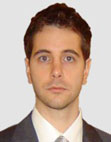
Alexandre SURGET
Étude de l’implication fonctionnelle de la neurogenèse hippocampique dans la pathophysiologie et le traitement de la dépression.
Directeur de thèse : Catherine Belzung
Lieu de thèse : Troubles Affectifs – INSERM U930 – Parc de Grandmont – 37200 Tours
2008

Brice Bathellier
Analysis of information processing in the olfactory bulb by in vivo experiments and theoretical modelling.
Directeur de thèse : W. Gerstner
Lieu de thèse : Calcul Neuromimétique – Département Informatique et Communication – Ecublens – 1015 Lausanne

David Dupret
Etude des relations réciproques entre neurogénèse adulte et fonctions hippocampiques.
Directrice de thèse : Nora ABROUS
Lieu de thèse : Equipe Neurogénèse et Physiopathologie – Centre de Recherche INSERM U862 – François Magendie – 146 rue Léo Saignat 33077 Bordeaux

Céline Feillet
Synchronisation par la nourriture des horloges circadiennes centrales et périphérique.
Directeur de thèse : Etienne Challet
Lieu de thèse : Département de Neurobiologie des Rythmes, 5 rue Blaise Pascal – 67084 Strasbourg

Jeanne Tamar Paz
Epilepsie-absence et ganglions de la base: étude intracellulaire in vivo de la propagation et du contrôle des activités paroxystiques.
Directeur de thèse : S. Charpier
Lieu de thèse : Cortex et épilepsie INSERM U.667 – Dynamique et physiopathologie des réseaux neuronaux, 11 place Marcelin Berthelot, Collège de France- 75005 Paris
2007

Eric Burguière
Rôle du cervelet dans la navigation : étude du mécanisme cellulaire de dépression synaptique à long terme des fibres parallèles.
Directeur de thèse : L. Rondi-Reig
Lieu de thèse : Équipe mémoire spatiale et navigation Physiologie de la Perception et de l’Action (LPPA), Paris

Samuel Lagier
L’inhibition dans le bulbe olfactif de rongeur : du récepteur GABAergique aux oscillations du réseau neuronal.
Directeur de thèse : P.-M. Lledo
Lieu de thèse : Laboratoire de Perception et Mémoire, Paris
2006

Thomas Boulin
Guidage et maintenance d’axones à la ligne médiane de Caenorhabditis elegans médiés par des protéines à domaines immunoglobuline.
Directeur de thèse : Oliver Hobert
Lieu de thèse : HHMI Center for neurobiology and behaviour, New York
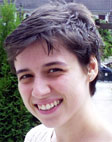
Delphine Charvin
Dopamine et dégénérescence des neurones striataux dans la maladie de Huntington : vers l’identification de nouvelles cibles thérapeutiques.
Directrice de thèse : Jocelyne Caboche
Lieu de thèse : Equipe Signalisation Neuronale et Régulation Génique, Lab. de Neurobiologie des Processus Adaptatifs, UMR7102, CNRS, UPMC, Paris

Jérôme Epsztein
Rôle des récepteurs kainate dans la transmission synaptique : une étude dans l’hippocampe de rat contrôle et dans un modèle animal d’épilepsie du lobe temporal.
Directrice de thèse : Valérie Crepel
Lieu de thèse : INSERM U29 – INMED, Marseille

Antony Falluel Morel
Étude des effets neuroprotecteurs du peptide PACAP sur la mort neuronale induite par la céramides au cours du développement du cervelet.
Directeur de thèse : Bruno J. Gonzalez
Lieu de thèse : NSERM U413, Neuroendocrinologie cellulaire et moléculaire, Mont-Saint-Aignan
2005

Julie KNIAZEFF
Les récepteurs membranaires : oligomérisation et activation. Cas des récepteurs couplés aux protéines G de la classe C. De la façon de vivre à deux: dialoguer ou s’ignorer.
Directeur de thèse : Jean-Philippe Pin
Lieu de thèse : CNRS UPR 2580, Montpellier

Mathias PESSIGLIONE
Dopamine, ganglions de la base et sélection de l’action: du singe MPTP au patient parkinsonien. Approche électrophysiologique et comportementale.
Directeur de thèse : Léon Tremblay
Lieu de thèse : INSERM U.289, Paris
2004

Bruno Bozon
Implication du gène immédiat précoce zif268 dans la plasticité synaptique, la consolidation et la reconsolidation mnésique. Lieu de thèse : Laboratoire de Neurobiologie de l’Apprentissage et de la Mémoire, CNRS UMR 8620, Bâtiment 446, Université Paris-Sud, 91405 Orsay

Etienne Herzog
Caractérisation des transporteurs vésiculaires du glutamate et diversité des systèmes glutamatergiques dans le cerveau de rat. Lieu de thèse : INSERM U.513, Neurobiologie et psychiatrie, Faculté de Médecine, 8 Rue du Général Sarrail, 94010 Créteil Cedex.

Stéphane Jamain
Identification de gènes de prédisposition à l’autisme et la schizophrénie.
Lieu de thèse : INSERM E021, Laboratoire de Génétique Humaine et Fonctions Cognitives, 25 Rue du Docteur Roux, 75724 Paris Cedex 15

Claire Wardak
Implication fonctionnelle de l’aire intrapariétale latérale (LIP) et du champ oculomoteur frontal (FEF) dans l’attention visuelle sélective chez le macaque.
Lieu de thèse : CNRS UMR 5015, UCBL, Institut des Sciences Cognitives, 67 Bd Pinel, 69675 Bron Cedex
2003

Jean Chemin
Propriétés fonctionnelles des sous-unités a1G , a1H et a1l des canaux calciques de type T.
Lieu de thèse : CNRS UPR 1142, Institut de génétique humaine, Montpellier

Etienne Formstecher
Rôle de PEA-15 dans la régulation de l’apoptose et de l’activité ERK/MAP-Kinase.
Lieu de thèse : Neuropharmacologie, Collège de France, Paris.

Cyril Monnier
Diversité fonctionnelle de l’intégration synaptique dans le cortex visuel primairean
Lieu de thèse : CNRS – IFR 2118, Institut Alfred Fessard Gif sur Yvette

Arnauld Sergé
Régulations de la dynamique membranaire de récepteurs de neurotransmetteurs par des protéines d’échafaudage
Lieu de thèse : CNRS UMR 5091, Physiologie cellulaire de la synapse, Bordeaux
Mèl : arnauld@biophys.leidenuniv.nl
2002

Nicolas Gompel
Quelques aspects du développement de la ligne latérale chez le poisson-zèbre Danio rerio (Hamilton, 1822), (Actinoptérigien, Cyprinidae).
Lieu de thèse : Université Montpellier II.

Julie Perroy
Le récepteur métabotropique du glutamate mGlu7 : voie de signalisation et fonction dans les neurones.
Lieu de thèse : Université Montpellier II

Michaël Zugaro
Influences des signaux multisensoriels et moteurs dans l’élaboration des réponses des cellules de direction de la tête chez le rat.
Lieu de thèse : Université Pierre et Marie Curie – (Paris VI)
2001

Peter Vanhoutte
Implication du facteur de transcription ELK-1 dans la plasticité synaptique et la différenciation neuronale.
Lieu de thèse : Laboratoire de Neurochimie-Anatomie, Institut des Neuroscience, 75005 Paris.

Evelyne Célérier
Processus opposants : de la tolérance à la sensibilisation. Application aux effets analgésiques des substances opiacées.
Lieu de thèse : INSERM U.259, Université Victor Ségalen Bordeaux 2

Julie Grèzes
Neuroanatomie fonctionnelle des liens entre la perception et l’action chez l’homme.
Lieu de thèse : INSERM U.280, Université Claude Bernard Lyon I
2000

Maria Cecilia Angulo
Etude des propriétés moléculaires et fonctionnelles des synapses exitatrices entre les cellules pyramidales et les interneurones GABAergique du néorcortex.
Lieu de thèse : CNRS UMR 7637 Neurobiologie (Paris)

Olga Corti
Transfert de l’ADN complémentaire codant la tyrosine hydroxylase dans un modèle expérimental dela maladie de Parkinson : contrôle de l’expression du transgène par la tétracycline.
Lieu de thèse : LGN, CNRS, UMR 9923 (Paris)

Emmanuel Procyk
Apprentissage et résolution de problèmes séquentiels chez le singe Rhésus.
Lieu de thèse : INSERM U94 (Bron)
